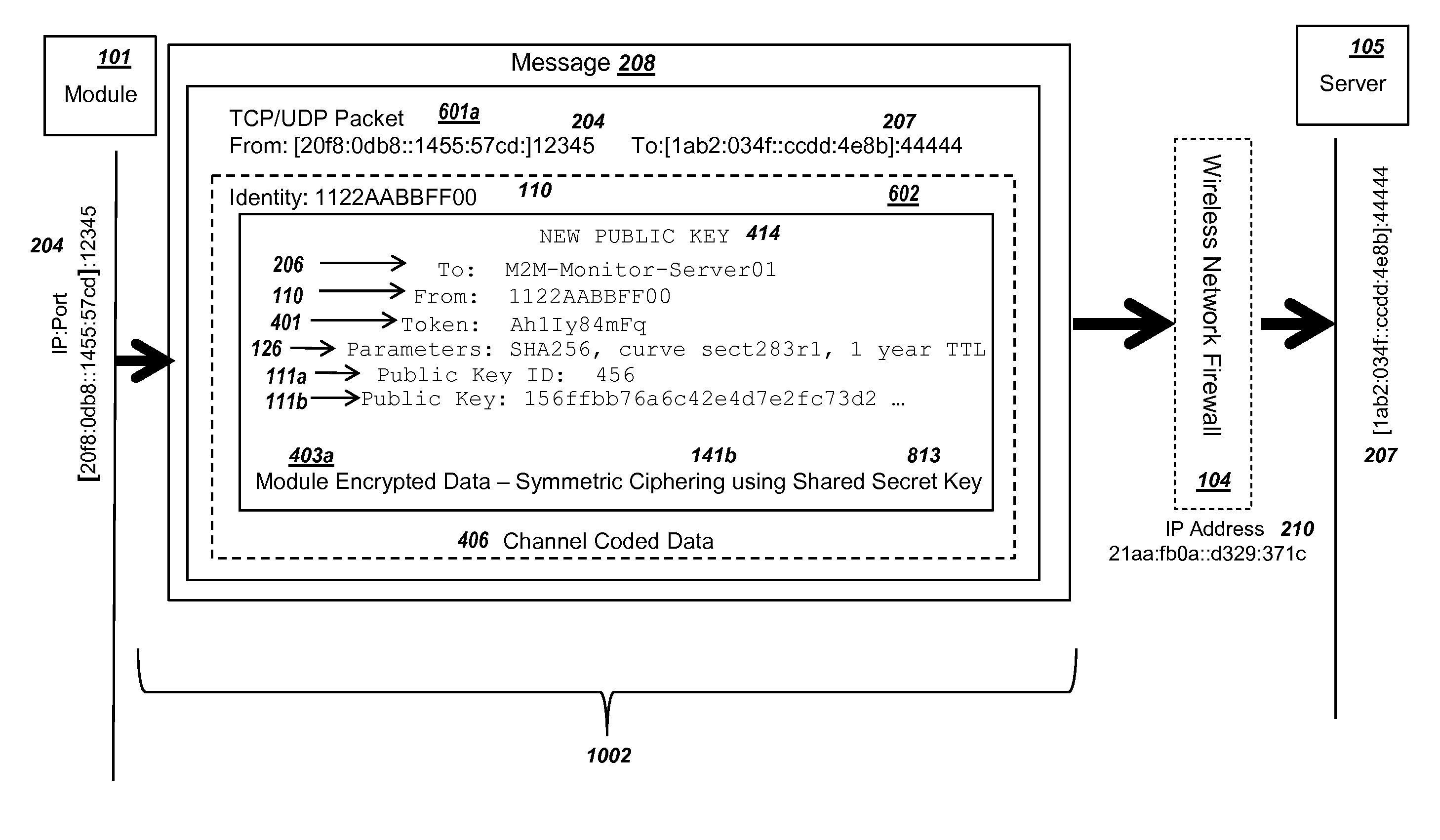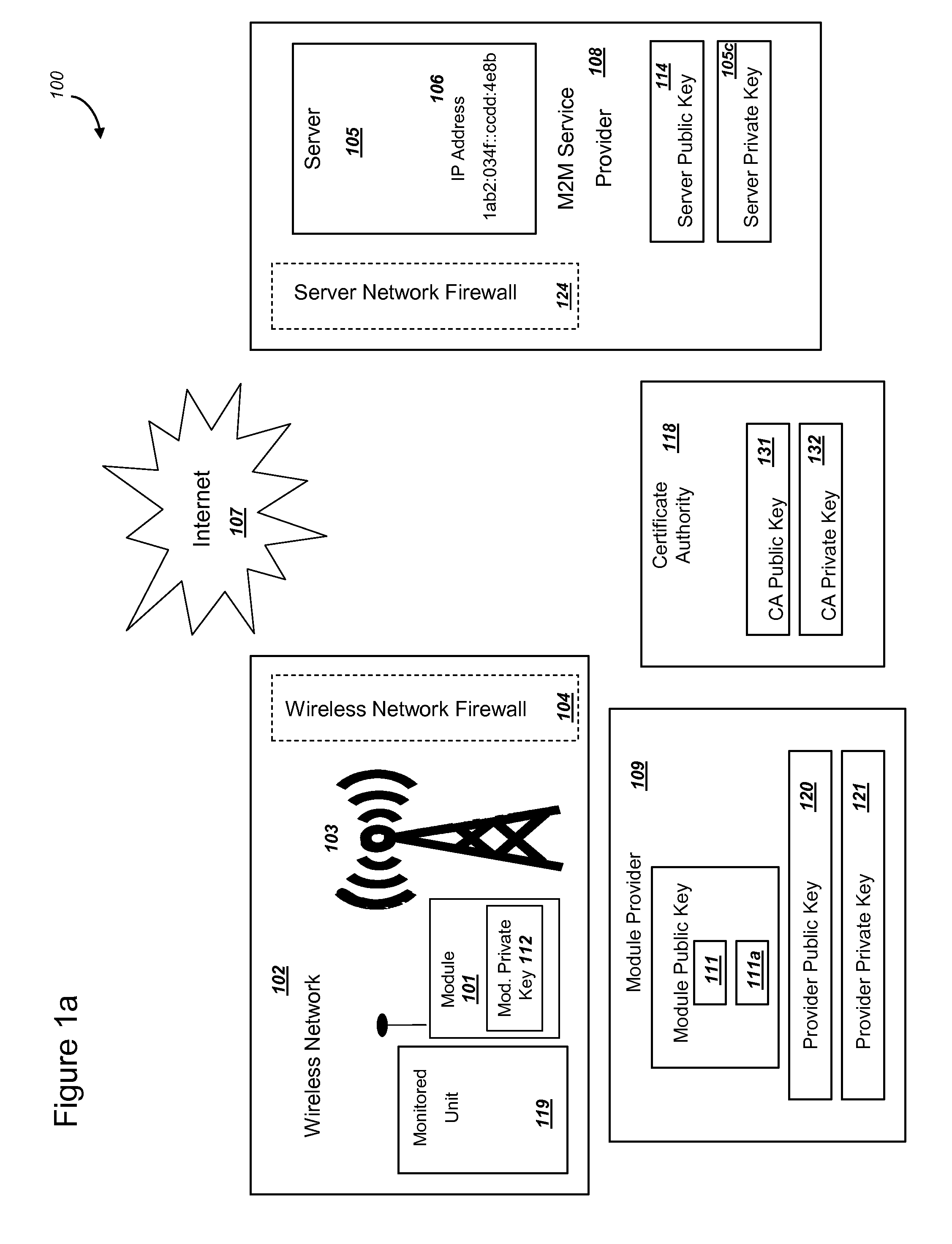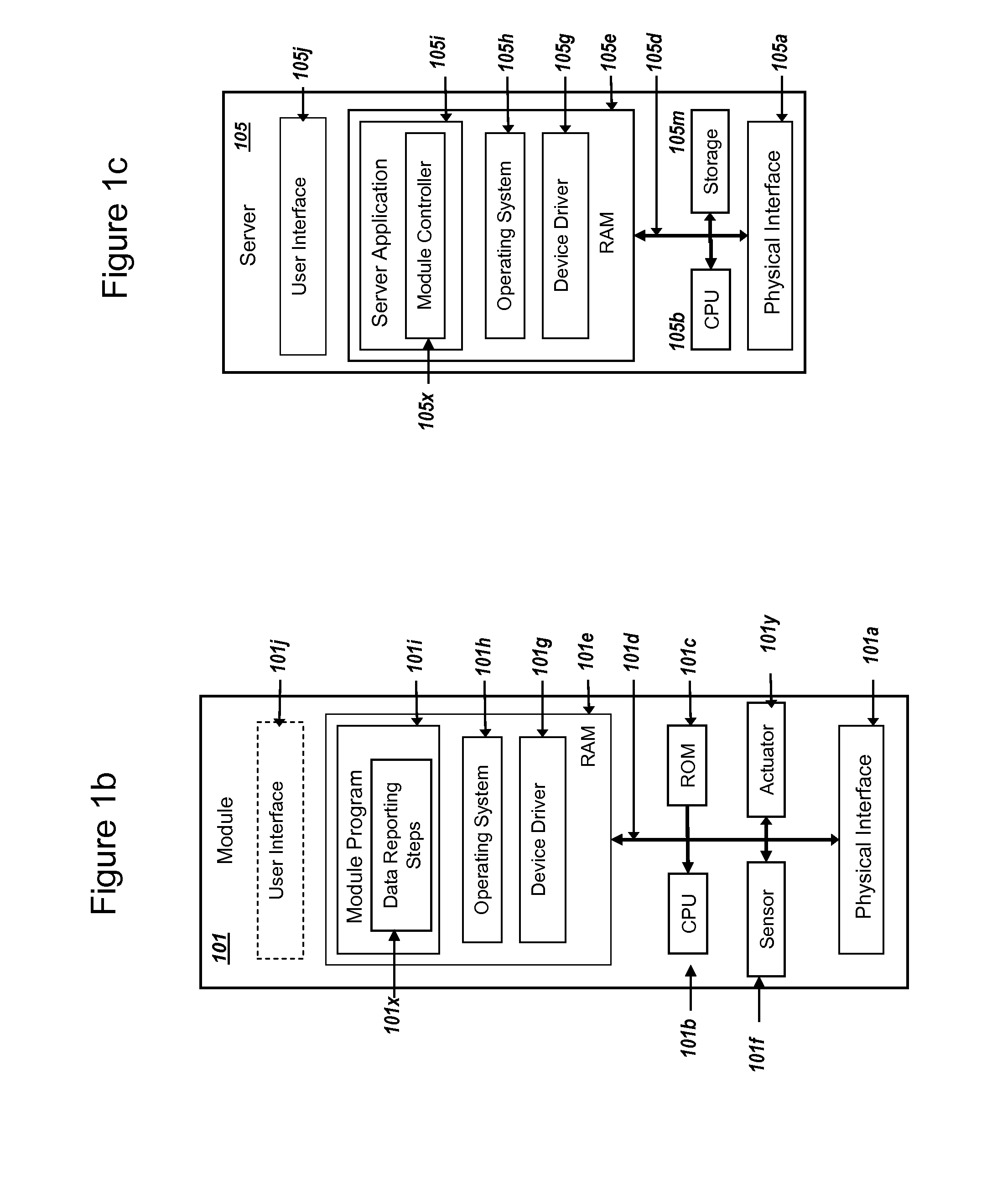Secure PKI Communications for "Machine-to-Machine" Modules, including Key Derivation by Modules and Authenticating Public Keys
a technology of module and key derivation, applied in the field of secure pki communication, can solve the problems of limiting the life of the wireless module battery, creating a significant new class of problems that need to be solved, and the system will require more frequent manual intervention for the replacement or recharging of the battery, so as to achieve secure and efficient communication, reduce power consumption, and increase efficiency
- Summary
- Abstract
- Description
- Claims
- Application Information
AI Technical Summary
Benefits of technology
Problems solved by technology
Method used
Image
Examples
Embodiment Construction
[0050]FIG. 1a
[0051]FIG. 1a is a graphical illustration of an exemplary system, where a server and a module connect to the Internet, in accordance with exemplary embodiments. The system 100 includes a module 101 operating within a wireless network 102. System 100 can also include a module provider 109, an Internet 107, and an M2M service provider 108, a certificate authority 118, and a monitored unit 119. M2M service provider 108 can include a server 105. System 100 is illustrated without specific packet transmissions between module 101 and M2M service provider 108. Examples of the communications and messages pertaining to the present invention will be illustrated in later Figures. As contemplated herein, machine-to-machine communications may comprise communication between a module 101 and a server 105, such that data can be transferred between the two with minimal manual intervention, although manual intervention can be required to set up system 100 and any occasional manual mainte...
PUM
 Login to View More
Login to View More Abstract
Description
Claims
Application Information
 Login to View More
Login to View More - R&D
- Intellectual Property
- Life Sciences
- Materials
- Tech Scout
- Unparalleled Data Quality
- Higher Quality Content
- 60% Fewer Hallucinations
Browse by: Latest US Patents, China's latest patents, Technical Efficacy Thesaurus, Application Domain, Technology Topic, Popular Technical Reports.
© 2025 PatSnap. All rights reserved.Legal|Privacy policy|Modern Slavery Act Transparency Statement|Sitemap|About US| Contact US: help@patsnap.com



